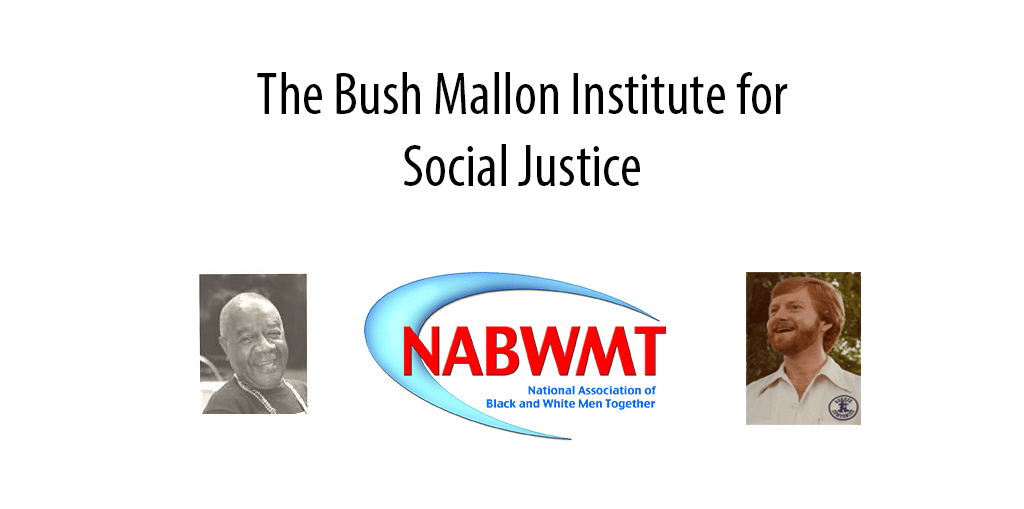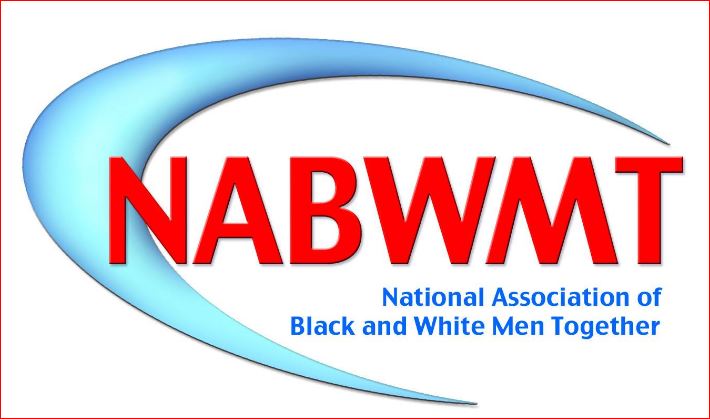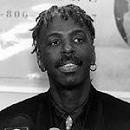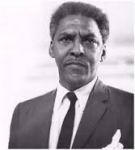
ABOUT
The Bush-Mallon Institute for Social Justice is the educational program and outreach activity of the NABWMT. The Institute goal has been to realize the mission of our organization to fight homophobia, racism, sexism, and other isms by providing information and resources, both internally to our membership, as well as externally to the greater LGBT community, and to society at large.
HISTORY
In 2006, the original name of the Institute was changed to the Bush-Mallon Institute for Social Justice to honor two members of the NABWMT for their contributions to the fight against social injustice and their contributions to the NABWMT: Dr. John E Bush (above right) and Gerald A Mallon.(above left).
LATEST NEWS
Suggested reading from James Credle:
The 1619 Project marks the 400th anniversary of the first arrival of enslaved Africans, aboard a Portugese slave ship to Virginia. It is a historic moment that typically passes without acknowledgement from news outlets or the general public.
In the American psyche, slavery is regarded in the past tense; it is thought of and written about as a distant blip on the extended timeline of United States history, an unfortunate atrocity of long ago. But violent chattel slavery and the systems of apartheid that followed it defined this country before it even had a name. Slavery informed every institution, from politics to healthcare to housing infrastructure. Knowledge of its mechanisms puts in context all of today’s struggles for equity and, by extension, every attempt to document them. Yet the record does not adequately reflect that, like the founding documents of this country, our misunderstanding of slavery’s awful influence is deceit by design.
Brutality white colonists would spend centuries perfecting and protecting; and the persistent resistance of Black people that pushed the US to live up to its own ideals.
A project of the New York Times
Contact Us about BMI
We would value your help or feedback
No ‘gay gene’: Sexuality is a complex mix, analysis finds
By Amina Khan LA Times.
A new study that analyzed the DNA of nearly half a million people has found that, while genetic differences play a significant role in sexual behavior, there is no single gene responsible.
The findings, which looked at behavior and not sexual identity, debunk the notion of a singular “gay gene.” Even when all tested genetic variants were taken into account, they collectively accounted for no more than a quarter of the same-sex behavior reported by the study participants.
Instead, the results published Thursday in the journal Science hint at the complex blend of factors that influence human sexuality, including society and the environment.
“The findings themselves reinforce this idea that diversity of sexual behavior across humanity is really a natural part of our overall diversity as a species,” said Benjamin Neale, a geneticist at the Broad Institute of MIT and Harvard and one of the study’s senior authors. “That’s a really meaningful and important result.”
STANDING ON THEIR SHOULDERS
REGGIE WILLIAMS
HIV/AIDS activist. Initiated the National Task Force on AIDS Prevention, (NTFAP) and became its Founding Executive Director. Member, the National Association of Black and White Men Together (NABWMT) and founder, BWMT’s AIDS task force (1984). The date of his death (November 7th) is now celebrated as the National Black HIV/AIDS Awareness Day. Died of AIDS.
BAYARD RUSTIN
..was one of the earliest and most influential Civil Rights leaders in the United States. He advocated a policy of non-violence as a means to oppose the policies of segregation, bigotry, and discrimination against the black population. It was because of Bayard Rustin that the leadership of the Civil Rights movement adopted peaceful action as a principle and a strategy.
THE BMI AND THE MEDIA COMMITTEES WORK TOGETHER TO AFFIRM OUR STATEMENT OF PURPOSE

I want to help the Media Committee in the 2020 General Election
CONTINUED……
“Gay Gene“…Though estimates of same-sex experiences vary, a 2016 CDC study of U.S. adults found that 6.2% of men and 17.4% of women between the ages of 18 and 44 reported at least one same-sex experience in their lifetimes. A smaller portion, 1.3% of women and 1.9% of men, described themselves as lesbian or gay, and 5.5% of women and 2.0% of men said they were bisexual — underscoring the difference between sexual behavior and sexual identity.
Scientists have long probed the nature of same-sex behavior, finding some evidence in twin studies that genetics plays a role. But such research has typically involved small numbers of people and hasn’t used modern methods of genomic analysis, scientists said.
“I had seen some quite poor studies of small samples and false claims and things, so I was glad that finally this topic was examined in a very scientific way with a large sample,” said Melinda Mills, a social and molecular geneticist at the University of Oxford who was not involved in the work.
Neale and an international team of researchers performed what’s known as a genome-wide association study. That involves using statistical methods to search for connections between SNPs — single nucleotide polymorphisms, or individual differences in a single building block in the genetic code — and a particular trait.
Finding clear and verifiable patterns in genetic data requires a huge sample, and the scientists knew where to find it. They pulled 408,995 individual records from the UK Biobank as well as 68,527 records from the U.S.-based personal genomics company 23andMe. This gave them an overall sample size of 477,522 people, 26,827 of whom reported same-sex sexual behavior.
The researchers found two significant spots in the genome that were linked to same-sex behavior across people of both sexes. And when they analyzed male and female genomes separately, they found three more — two specifically for men and one specifically for women — bringing the total number of significant genetic markers up to five.
Nonetheless, when taken all together, these five locations on the genome could account for much less than 1% of same-sex sexual behavior on a population level, the researchers said.
Using a different analytical technique, the scientists found that, when taking into account all of the subtle influences of many, many markers across the genome that they did not specifically identify, genetics could potentially account for up to 8% to 25% of the population’s same-sex behavior. That’s because, in all likelihood, a huge and currently unknown number of genetic markers probably play infinitesimally tiny roles in shaping behavior, Neale said.
Another analysis in the paper, which did not focus on DNA but on familial relationships between 106,979 pairs of individuals, suggested that a slightly larger share of the variation in same-sex behavior, 32.4%, could be attributed to genetics. That number may take into account other complex genetic effects beyond SNPs, though it might also be influenced by some assumptions baked into the framework, the scientists said.
Among the five significant SNPs they found, the ones specific to men were linked to smell receptor genes, sensitivity to certain scents and regulation of sex hormones such as testosterone.
That finding “makes a certain amount of sense,” Neale said, “but again, we don’t have much more to say beyond that sort of high- level description.”
The incomplete overlap between the genetic markers linked to male and female same-sex behaviors is a sign that slightly different processes may be at work in men and women when it comes to sexual behavior. It may also speak to differing influences of gendered social norms, said Mills, who wrote a commentary on the results.
If less than one-third of a population’s sexual behavior is linked to genetics, where does the rest come from? Environment, culture and other factors may play a significant role, Neale said.
It’s somewhat akin to traits like height, which have a certain genetic component but can also be influenced by a complex array of other factors, such as nutrition and environment.
Exactly which environmental and cultural factors play a role is unclear, because those are varied and complex and are much harder to pin down and study than specific genetic markers, the study authors said.
“The genome is a big place,” Neale said. Even so, he added, “we can systematically evaluate it like we do here. We have no comparable tool for thinking about the environment.”
The scientists also looked specifically at the “nonheterosexual” subjects in the study — those who had at least one same-sex experience — and asked them what proportion of their sexual partners were of the same sex. Responses varied across a six-point scale, from “other sex mostly” to “same sex only.”
In this respect, the researchers found, genetics had a stronger influence on same-sex behavior in men than in women.
They also saw that the genetic factors influencing the proportion of same-sex to other-sex partners a person had were different from the ones that separated those who had any same-sex experiences from those who had only other-sex experiences.
This means that the Kinsey scale and other frameworks for sexual behavior that assume that more same-sex attraction means less opposite-sex attraction are not accurate. They must be based on a misunderstanding or an oversimplification of the processes at work, the scientists said.
“From a genetic standpoint, there is no single [continuum] from opposite-sex to same-sex sexual behaviors,” said lead author Andrea Ganna, a human geneticist at the Institute of Molecular Medicine in Finland.
This confirmation of the wide diversity of sexual behavior echoes what the researchers said they heard in discussions of the results with representatives of the LGBTQ community.
“The LGBTQ-plus community has been arguing for a long time that there’s this range of sexualities; it’s not binary: zero and one,” Mills said. “I think that’s what those additional analyses show.”
The scientists were quick to point out that the findings were population-based and could not be applied on an individual level. They also warned that the work should not in any case be used to try to “convert” people who engage in same-sex behaviors, and that to consider doing so would be a gross misrepresentation of the study’s findings.
“Simply put, that is not an appropriate reflection or representation of the work that we’ve done,” Neale said.
Officials with GLAAD, an LGBTQ advocacy organization, praised the work.
“This new study provides even more evidence that that being gay or lesbian is a natural part of human life, a conclusion that has been drawn by researchers and scientists time and again,” GLAAD Chief Programs Officer Zeke Stokes said in a statement. The work “also reconfirms the long-established understanding that there is no conclusive degree to which nature or nurture influence how a gay or lesbian person behaves.”
The researchers acknowledged some limitations to the study. For example, the research focused mostly on individuals of European ancestry. It also did not include people whose biological sex and self-identified sex or gender did not match.
“The analyses do not include transgender persons, intersex persons, and other important persons and groups within the queer community,” the study authors wrote. “We hope that this limitation will be addressed in future work.”
Their findings are far from the final word on the unknown complexities of human sexuality, the researchers said.
“In a lot of ways, this work poses more questions than answers,” Neale said.


